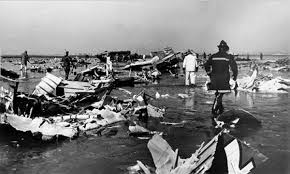The Implications of the Recent Plane Crashed Incident

Introduction
The recent incident involving a plane crash in the vicinity of the Lake District has raised significant concerns about aviation safety protocols. With an alarming increase in such events, understanding the factors contributing to these tragedies is essential for implementing necessary changes to ensure passenger safety.
The Incident Details
On March 15, 2023, a small private aircraft went down shortly after taking off from a local airstrip in Cumbria. Emergency services responded promptly, but unfortunately, all four individuals on board perished in the crash. Preliminary investigations suggest that adverse weather conditions, including dense fog and high winds, may have played a pivotal role in the accident. Aviation experts are now focusing on the operational decisions made by the pilot during takeoff.
Investigation and Reactions
Authorities have launched a comprehensive investigation into the crash, collaborating with the Air Accidents Investigation Branch (AAIB) to gather data and evidence from the site. Initial reports from eyewitnesses indicated that the aircraft was struggling to gain altitude before it suddenly disappeared from sight. This event has reignited debates about weather assessment protocols and pilot training concerning adverse flying conditions.
The Broader Impact on Aviation Safety
This tragic incident highlights the ongoing challenges in improving aviation safety. According to the International Civil Aviation Organization (ICAO), while commercial air travel remains one of the safest modes of transportation, small aircraft such as these are disproportionately involved in accidents. The aviation industry must address issues such as pilot training, aircraft maintenance, and adherence to safety regulations to mitigate such hazards effectively.
Conclusion
As the investigation unfolds, it is clear that incidents like this plane crash serve as somber reminders of the inherent risks involved in aviation. Stakeholders, including regulatory agencies and flight training organisations, must take proactive steps to enhance safety measures and reduce the likelihood of future crashes. The ultimate aim is to ensure a safer flying environment for all, minimising the tragic outcomes seen in incidents like this.
